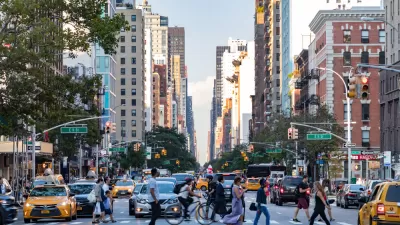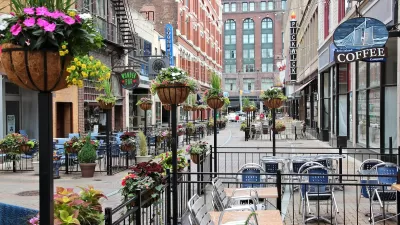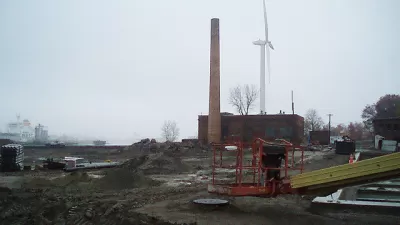The Foot Traffic Ahead 2016 report, by Smart Growth America and The George Washington University’s Center for Real Estate & Urban Analysis ranks cities based on their walkability.

Smart Growth America released the Foot Traffic Ahead 2016 report this week, finding that "walkable urban places (WalkUPs) in all 30 of the largest metros are gaining market share over their drivable sub-urban competition—and showing substantially higher rental premiums."
Smart Growth America produced the report in conjunction with George Washington University’s Center for Real Estate & Urban Analysis, led by Christopher Leinberger and Michael Rodriguez.
According to a page announcing the report on the Smart Growth America website, the report ranks 30 metros "on the current percentage of occupied walkable urban office, retail, and multi-family rental square feet in their WalkUPs, compared to the balance of occupied square footage in the metro area." According to those metrics, New York City; Washington, D.C.; Boston; Chicago; San Francisco; and Seattle rank the highest, respectively.
David Alpert picked up on the news of the report for Greater Greater Washington, noting the positive performance of the Washington, D.C. area in the ranking. Among the notable findings of the report regarding the Washington, D.C. area, "the walkable development in jurisdictions outside the (or a) traditional center city. In the Washington region, half of the walkable urbanism is not inside DC, but in places like Silver Spring, Reston, and Old Town Alexandria."
FULL STORY: Foot Traffic Ahead 2016

Study: Maui’s Plan to Convert Vacation Rentals to Long-Term Housing Could Cause Nearly $1 Billion Economic Loss
The plan would reduce visitor accommodation by 25% resulting in 1,900 jobs lost.

Alabama: Trump Terminates Settlements for Black Communities Harmed By Raw Sewage
Trump deemed the landmark civil rights agreement “illegal DEI and environmental justice policy.”

Why Should We Subsidize Public Transportation?
Many public transit agencies face financial stress due to rising costs, declining fare revenue, and declining subsidies. Transit advocates must provide a strong business case for increasing public transit funding.

Paris Bike Boom Leads to Steep Drop in Air Pollution
The French city’s air quality has improved dramatically in the past 20 years, coinciding with a growth in cycling.

Why Housing Costs More to Build in California Than in Texas
Hard costs like labor and materials combined with ‘soft’ costs such as permitting make building in the San Francisco Bay Area almost three times as costly as in Texas cities.

San Diego County Sees a Rise in Urban Coyotes
San Diego County experiences a rise in urban coyotes, as sightings become prevalent throughout its urban neighbourhoods and surrounding areas.
Urban Design for Planners 1: Software Tools
This six-course series explores essential urban design concepts using open source software and equips planners with the tools they need to participate fully in the urban design process.
Planning for Universal Design
Learn the tools for implementing Universal Design in planning regulations.
Smith Gee Studio
Alamo Area Metropolitan Planning Organization
City of Santa Clarita
Institute for Housing and Urban Development Studies (IHS)
City of Grandview
Harvard GSD Executive Education
Toledo-Lucas County Plan Commissions
Salt Lake City
NYU Wagner Graduate School of Public Service





























